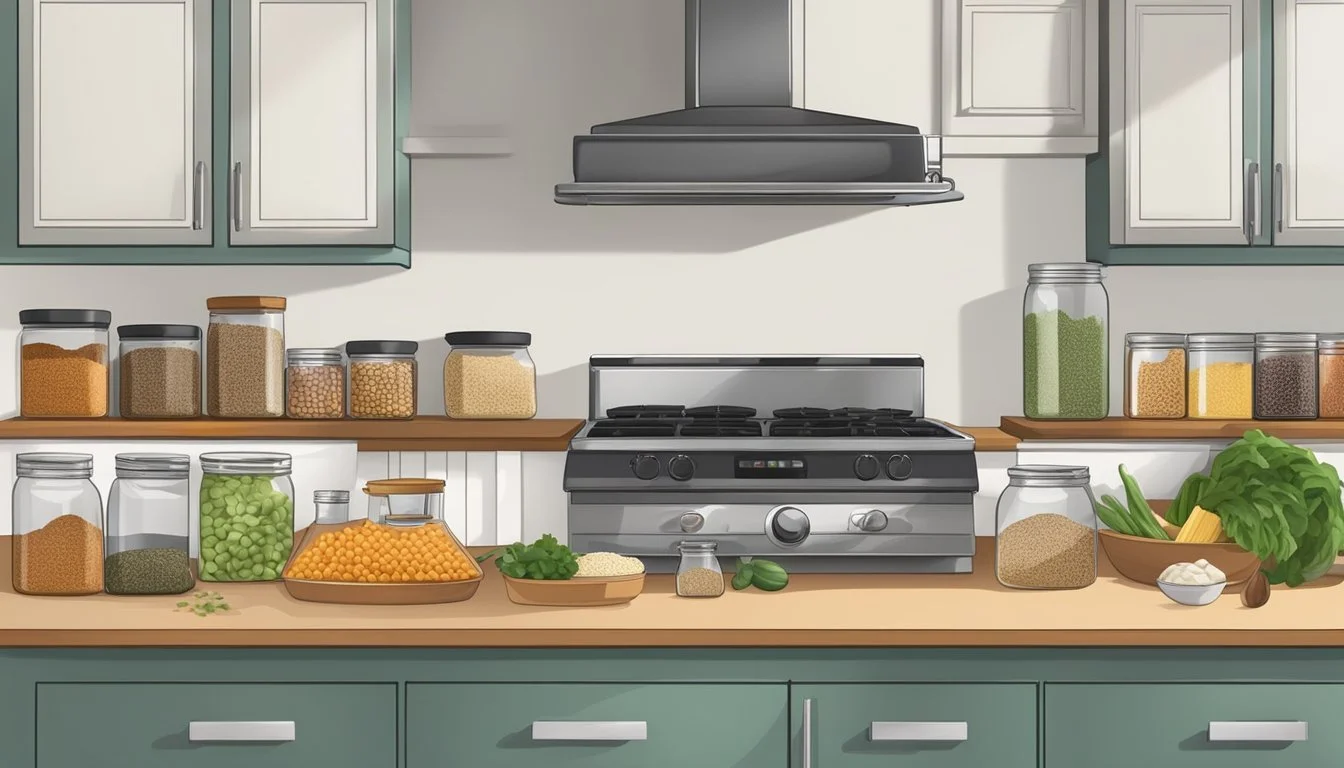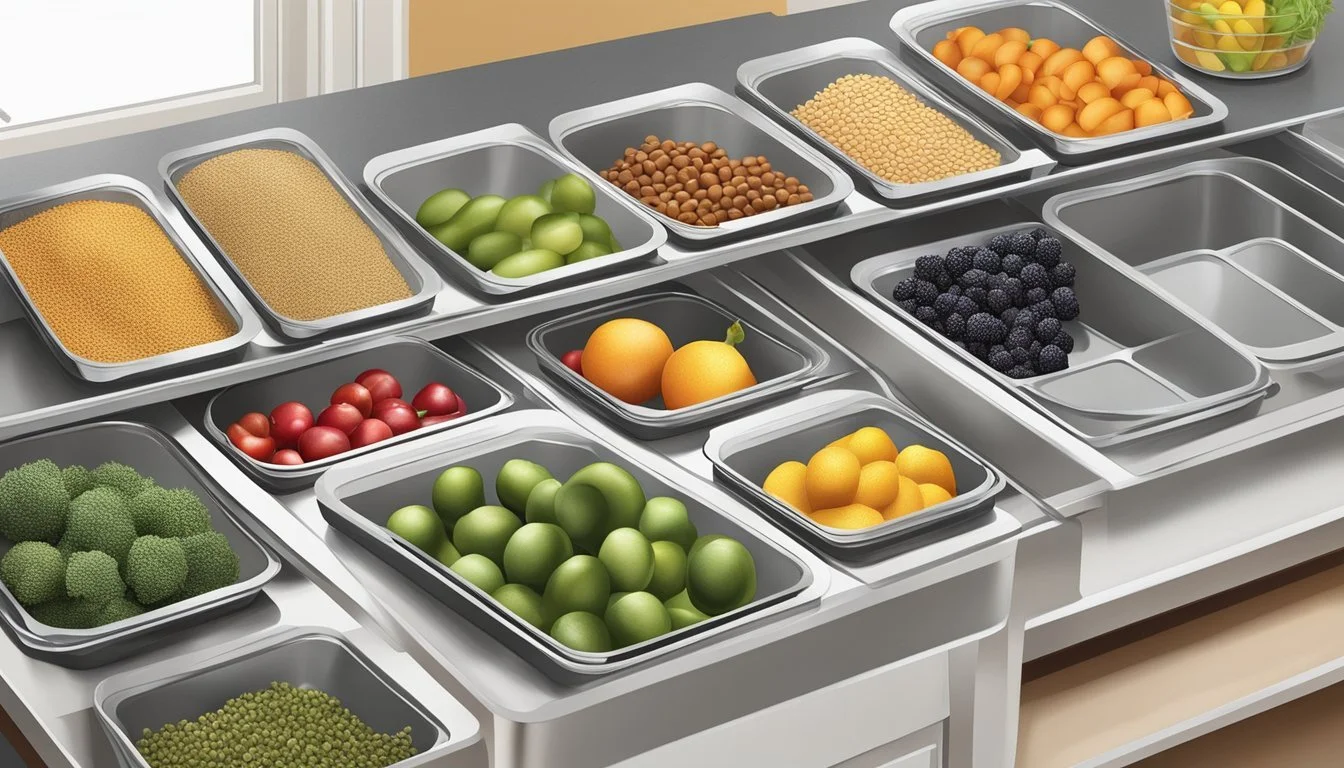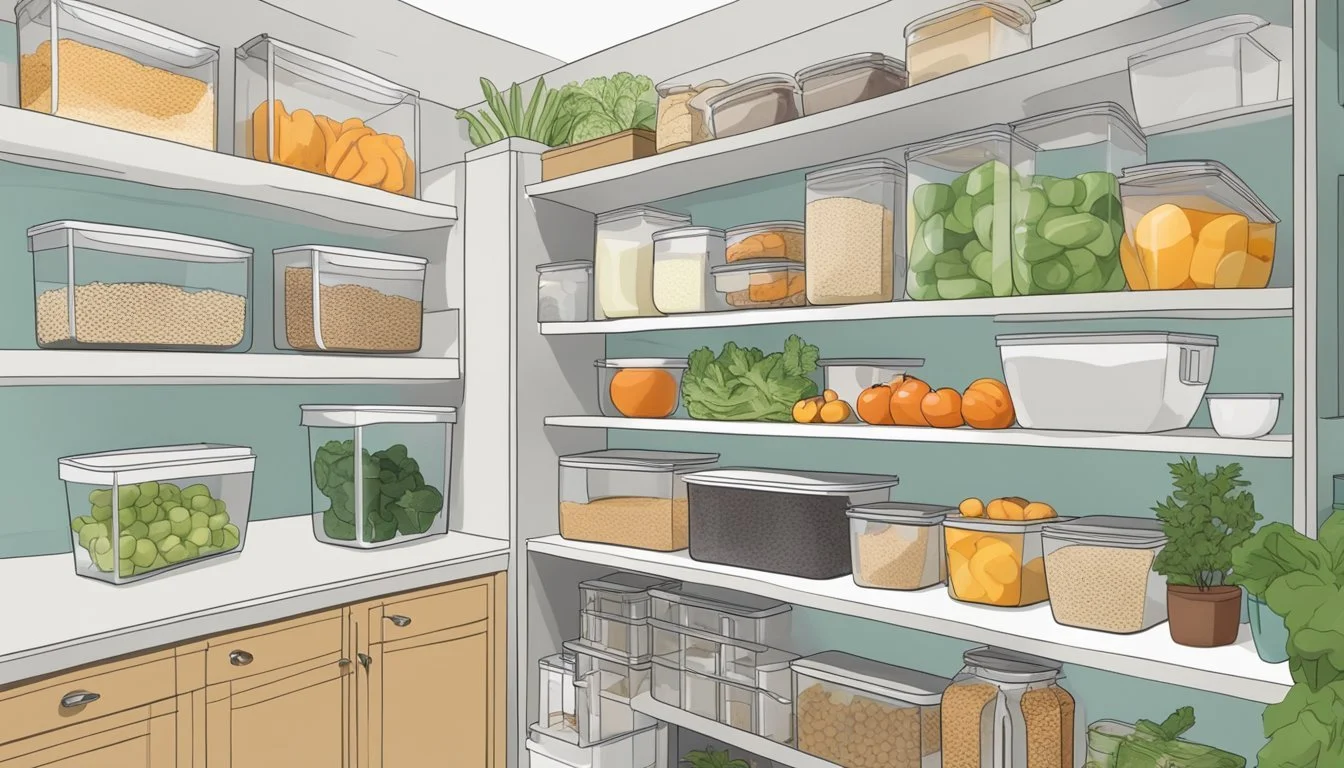Organizing Your Kitchen for Healthy Eating
A Guide to Nutritious Meal Prep
Organizing a kitchen with health in mind sets the stage for making better food choices. When healthy foods are more accessible and attractively displayed, a person is more inclined to reach for them over less nutritious alternatives. The design of a kitchen and the arrangement of foods within it can significantly influence eating habits, guiding individuals to opt for fruits, vegetables, and whole grains with ease.
Strategic placement of food items is a key element in creating an environment conducive to healthy eating. For example, keeping a fruit bowl in plain sight invites snacking on fresh produce, while storing less healthy snacks in less visible areas reduces temptation. Similarly, a well-stocked refrigerator with prepped vegetables and ready-to-eat salads encourages consumption of these healthful choices.
The layout of kitchen tools also plays an important role in fostering healthier eating practices. Having a designated chopping station complete with cutting boards and sharp knives invites one to prepare fresh ingredients with minimal hassle. By simplifying the process of preparing nutritious foods, individuals are more likely to incorporate them into their daily meals, leading to a sustained pattern of healthy eating.
Foundations of a Healthy Kitchen
The cornerstone of adopting a healthier lifestyle is often found in one's kitchen. By establishing clearly defined eating goals and optimizing the kitchen layout, individuals can foster an environment that encourages better food choices.
Establishing Healthy Eating Goals
Setting goals is critical for maintaining a focus on healthy eating. Kitchen organization should reflect these objectives by keeping nutritious foods accessible. A simple but effective strategy is "out of sight, out of mind," which recommends storing unhealthy snacks away from immediate view, reducing temptation. For example, a colorful fruit bowl on the counter serves as a visual and convenient reminder to integrate more fruit into one's diet.
Essential Kitchen Layout Principles
An effective kitchen layout streamlines the process of creating wholesome meals. The following principles can help:
Accessibility: Arrange everyday items like good knives and chopping boards at arm's reach to make food prep less of a chore and more appealing.
Visibility: Store healthy choices, such as whole grains and snacks like nuts and seeds, in clear containers at eye level in the pantry and fridge.
Convenience: Create a dedicated chopping station complete with a compost bin, ensuring an efficient workflow for handling produce.
By adopting these foundational practices, individuals can navigate their kitchens with ease, making healthy eating a natural and straightforward choice.
Maximizing Refrigerator Efficiency
Efficient refrigerator organization ensures fresh ingredients are easily accessible and helps reduce food waste by keeping perishables at the forefront. Proper placement and arrangement can encourage healthier eating by making nutritious choices such as fresh produce more visible and convenient.
Strategic Placement of Foods
Foods should be placed in the refrigerator in a manner that aligns with the temperature zones and their usage frequency.
Upper Shelves: Reserve for drinks, ready-to-eat foods like yogurt, and leftovers. Keep these at eye level to encourage consumption.
Lower Shelves: Designate for raw ingredients needing cooler temperatures, including meats and dairy products.
Door Shelves: Store condiments, juices, and less perishable items here since the door temperature is the most variable.
Organizing for Freshness and Accessibility
Fresh Produce: To keep fruits and vegetables fresh, they should be stored in clear containers or designated drawers that maintain optimal humidity.
Fresh fruit: Place in a clear bin at eye level to encourage healthy snacking.
Leafy greens: Store in a slightly humid environment to prolong their freshness.
Preventing Food Waste: Keep older items toward the front to use them first. Use airtight containers to preserve leftovers and label them with dates.
Pantry and Dry Goods Organization
Effective pantry organization can greatly simplify one's journey to healthier eating. By arranging the pantry in a way that prioritizes accessibility and visibility, one encourages healthier food choices and a more efficient cooking environment.
Decoding the Pantry Layout
The layout of a pantry should adhere to a system where healthy foods are the most accessible. This means placing whole grains, nuts, seeds, and legumes in easily reachable places. Utilize clear containers to store these items so that one can quickly identify their contents and monitor their supply levels. Containers with labels also aid in maintaining an orderly pantry.
Designating specific zones within the pantry for different food categories is also beneficial. For instance, one might consider a section for cooking essentials such as oils and spices, another for baking ingredients, and a separate one for snack foods. Ensuring that there is a distinct and designated spot for each category prevents the chaos of scattered items and makes it easier for one to find what they need without sifting through unhealthy options.
Storing for Visibility and Convenience
When storing items, it is essential to ensure visibility and convenience. This means placing healthier snack foods, like dried fruits and nuts, at eye level so that they are the first items one sees. Reserve harder-to-reach shelves for occasionally used items or less healthy temptations.
Integrate tools such as:
Tiered shelves to elevate jars and cans in the back, so everything is in view
Lazy Susans to store condiments and sauces for easy access
Over-the-door organizers for extra storage and to maximize space
By aligning one's pantry organization with the foods on their grocery list, they can not only foster healthier eating habits but also streamline the food preparation process. With a well-organized pantry, they minimize the time spent searching for items, leading to a more efficient cooking experience.
Freezer Management for Healthy Eating
Effectively organizing the freezer can simplify making healthier food choices. A well-managed freezer saves time, preserves food quality, and makes it easier to access nutritious options.
Segmentation and Food Grouping
The freezer should be segmented according to food groups to streamline meal prep and reduce the temptation of less healthy foods. Food grouping allows one to quickly find ingredients without searching through less healthy options.
Fruits and Vegetables:
Keep frozen berries, mixed vegetables, and other plant-based items together. This can make them the go-to option for smoothies or quick stir-fry dishes.
Proteins:
Store lean meats, seafood, and plant-based proteins like edamame or tempeh in a dedicated section. Organize by type and date to ensure proper rotation and usage.
Whole Grains:
Group together whole-grain items such as brown rice, quinoa, and whole-grain bread for easy pairing with proteins and vegetables.
Prepared Meals:
If space allows, have a section for healthy homemade meals that are pre-portioned and ready to heat.
Proper Freezer Storage Tactics
Using the right storage tactics in the freezer not only ensures the longevity of food but also contributes to maintaining its nutritional value.
Maintain Air Circulation:
Avoid overpacking. Allow for adequate airflow to maintain consistent temperature and prevent freezer burn.
Use Proper Containers:
Sealable bags, airtight containers, or vacuum-sealed packets are ideal to protect food quality and avoid cross-contamination.
Label and Date:
Clearly label each item with contents and a freeze date. This aids in using older items first and reduces waste.
Herb Preservation:
Store fresh herbs in ice cube trays with water or olive oil to add instant flavor to meals without the need for less healthy seasoning mixes.
Countertop and Kitchen Space Efficiency
Organizing kitchen countertops and spaces efficiently is key to making meal preparation smoother and promoting healthier eating habits. By strategically arranging gadgets and appliances and creating effective prep areas, individuals can ensure their kitchen space supports their wellness goals.
Gadget and Small Appliance Arrangement
Blender and Small Appliances: To maintain an organized workflow, one should store frequently used small appliances like blenders within easy reach but off the countertop to avoid clutter. Cabinets or appliance garages can be the perfect hideaway for these items when not in use. To further streamline the countertop:
Use: Keep the most-used gadgets accessible
Store: Tuck away infrequently used items
Kitchen Gadgets: With gadgets such as spiralizers or mandolines, efficiently employ drawer dividers or utensil holders. This ensures that each gadget has a designated spot, making them easy to find and use. Always consider:
Accessibility: Place gadgets according to frequency of use
Organization: Use organizers specific to gadget sizes and shapes
Creating an Effective Prep Area
Cutting Board and Prep Essentials: The cutting board, a central prep tool, should have a dedicated space. Preferably, position it near the sink for quick rinsing of produce and easier cleanup. Surround it with essentials like knives and bowls within arm’s reach but arranged to save space. Keep in mind the following:
Location: Next to the sink for convenience
Arrangement: Store knives on magnetic strips and bowls nested to save space
Cookware: Organize cookware by function and frequency of use, stacking pots and arranging pans with hanging racks if possible. This avoids overcrowding in prep areas and ensures the right tool is always handy. Implement:
Stacking: Nest pots and pans by size
Hanging: Use wall or ceiling racks for easy access
Selecting and Using Food Storage Containers
Selecting the right food storage containers helps maintain food freshness and supports healthy eating habits by making nutritious options readily visible and accessible.
Types of Containers
When choosing food storage containers, one should opt for clear containers, which allow easy identification of the contents inside, encouraging the use of fresh produce and whole foods. Containers come in various materials such as glass and BPA-free plastic. Glass containers are durable and do not absorb flavors or smells, while high-quality plastic containers offer the convenience of being lightweight and often stackable. For dry goods, using airtight containers can keep ingredients like whole grains and nuts fresh.
Glass Containers: Non-porous, long-lasting, and microwave-safe.
Plastic Containers: Lightweight, often stackable, and freezer-safe.
Container Labeling and Rotation
Labeling containers lends to better inventory management, ensuring older food is used before newer supplies. One can label containers with the contents and the date it was stored. Rotation is crucial to avoid spoilage; therefore, one should employ the "first in, first out" method. This involves positioning older items at the front and newer ones at the back of the fridge or pantry.
Labeling Method:
Use water-resistant labels or markers.
Include the item name and date of storage.
Rotation Strategy:
Place newer items behind the older ones.
Routinely check dates and adjust placement accordingly.
Utilizing clear containers with systematic labeling and rotation can result in an efficient, health-conscious kitchen environment.
Healthy Cooking Essentials
To facilitate healthy eating, a kitchen should be equipped with the right tools and cookware. Durability, ease of use, and versatility are key factors in selecting items that foster a wholesome cooking environment.
Investing in Quality Cookware
Quality cookware is essential for healthy cooking as it ensures even heat distribution, reduces the need for excessive oil, and withstands the rigors of daily use. A set like the Le Creuset Toughened Nonstick PRO Cookware Set provides a variety of pots and pans suitable for different cooking techniques. These nonstick surfaces allow for less oil usage and easy cleanup.
Key cookware includes:
Nonstick frying pans for low-fat sautéing
Saucepans with lids for grains and sauces
A large stockpot for soups and broths
A Dutch oven for stews and one-pot meals
Choosing pieces that are oven-safe broadens the cooking possibilities, enabling healthier preparation methods like roasting and baking.
Essential Cooking Tools and Utensils
Aside from cookware, a well-organized set of tools and utensils supports efficient and health-conscious food preparation.
Must-have tools include:
A sturdy cutting board, preferably bamboo or hardwood, for prepping fruits and vegetables
Knives of various sizes for precise cutting, which helps in portion control and maintaining the integrity of fresh ingredients
Measuring cups and spoons for accurate ingredient portions to manage caloric intake
A multipurpose food scale like the OXO Good Grips 11-Pound Food Scale to ensure portion sizes align with dietary goals
These essentials aid in the preparation of nutritious meals and encourage home cooks to experiment with fresh, whole-food recipes. A kitchen well-stocked with these tools is a solid foundation for a lifestyle centered on healthful eating.
Grocery Shopping and Meal Planning
Organizing your kitchen for healthy eating begins with strategic grocery shopping and meal planning. These steps lay the foundation for nutritious meals throughout the week and help individuals stick to their health goals.
Creating a Balanced Grocery List
A balanced grocery list should span all food groups to ensure diversity in nutrients. For instance, protein sources are vital and can include chicken, fish, tofu, and legumes. One should not forget to incorporate a variety of vegetables and fruits for essential vitamins and minerals. Items like whole grains for fiber, and nuts and seeds for healthy fats are also important. Healthy choices can be supported by preferring whole foods over processed ones. Consider the following structured list:
Proteins: Chicken breast, salmon, tofu, black beans
Vegetables: Broccoli, spinach, bell peppers, sweet potatoes
Fruits: Apples, berries, oranges, bananas
Whole grains: Brown rice, quinoa, whole wheat pasta
Dairy: Greek yogurt, cottage cheese, unsweetened almond milk
Healthy fats: Avocados, almonds, olive oil
Efficient Meal Prep Strategies
Effective meal prep involves taking steps to minimize time in the kitchen while maximizing nutrition. A strategy for meal prep might include cooking protein in large batches, such as grilling several chicken breasts or preparing a sizeable portion of tofu to be used throughout the week. Chopping and storing vegetables in advance streamlines cooking processes. One can also pre-portion meals into containers, aligning with their dietary goals. A practical approach could look like this:
Sunday: Cook proteins, grains, and legumes for the week.
Monday: Wash and chop vegetables.
Tuesday and Thursday: Assemble meals using pre-cooked ingredients.
Wednesday: Prepare fresh salads to ensure variety.
Consistency in meal prep ensures that there are always healthy options readily available, reducing the temptation to opt for less nutritious choices.
Maintaining an Organized and Inviting Kitchen
An organized and inviting kitchen facilitates healthier eating habits and creates an environment that enhances the cooking experience. This section explores the importance of aesthetics in kitchen organization and the necessity of regular maintenance routines.
The Role of Aesthetics
Aesthetics play a crucial role in maintaining an organized kitchen. Visual appeal encourages use of the space and can even influence healthier food choices. By placing a colorful bowl of fresh fruit on the counter, one not only adds a vibrant touch to the kitchen but also provides a convenient snack option. Incorporating plants, like fresh flowers, can elevate the overall atmosphere, making the kitchen more welcoming. Keeping glasses and dishware neatly arranged and within reach ensures that the kitchen is ready for healthy meal preparation and consumption at any time.
Regular Cleaning and Decluttering
A systematic approach to cleaning and decluttering is essential for keeping a kitchen well-organized. Regular decluttering helps to remove excess items that can cause disarray and obscure healthy food choices. Here are specific steps to maintain cleanliness and order:
Daily: Wipe down countertops and surfaces to keep them free from crumbs and spills.
Weekly: Sort through the refrigerator and pantry, removing any expired items and wiping down shelves.
Monthly: Deep-clean storage areas and reorganize pantry staples, placing healthier options within easy view and reach.
By adhering to this schedule, one ensures the kitchen space remains hygienic, inviting, and conducive to healthy eating habits.
Mitigating Unhealthy Temptations
Maintaining a healthy diet often requires one to strategically organize their eating environment. The kitchen, being the center of food preparation and storage, plays a crucial role in influencing dietary choices. By implementing effective organizational tactics, one can reduce the allure of unhealthy foods.
Keeping Unhealthy Foods Out of Sight
Objective: Limit visual cues that trigger unhealthy eating
Strategy:
Store unhealthy foods in opaque containers
Relocate these items to less accessible shelves or drawers
Visual cues can significantly influence eating behaviors. By placing unhealthy foods out of sight, individuals are less likely to consume them on impulse. Keeping such items off the countertops and away from eye level reduces temptation and supports healthier eating decisions.
Strengthening Healthy Habits
Objective: Make healthy food choices more intuitive
Strategy:
Position healthy foods at eye level in the fridge and pantry
Utilize clear containers for nutritious options to increase visibility
Creating an environment that favors healthy choices ensures that individuals are more likely to reach for nutritious options. By displaying healthy foods prominently, one reinforces positive eating habits and makes it easier to select beneficial snacks and meals during moments of hunger.






